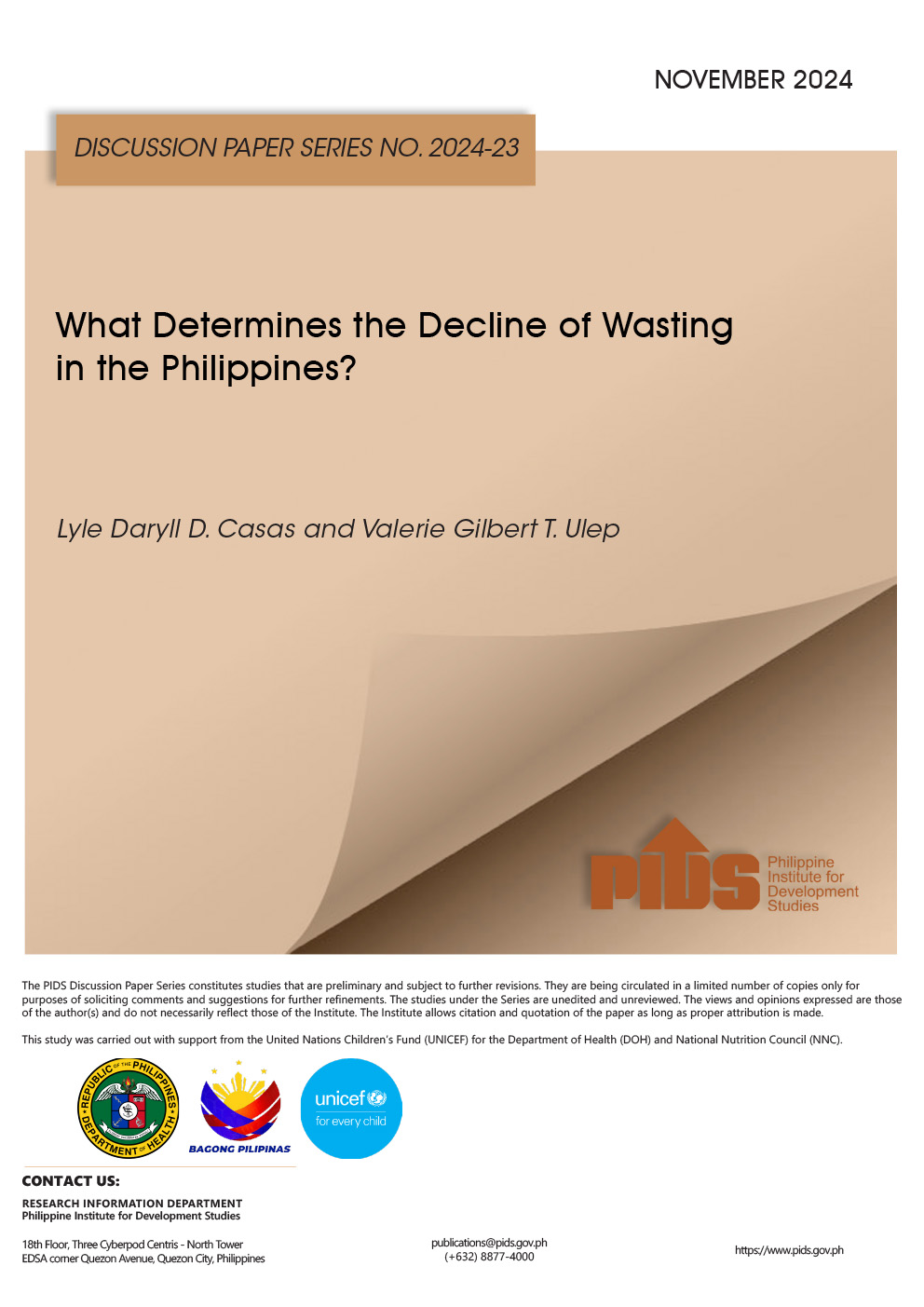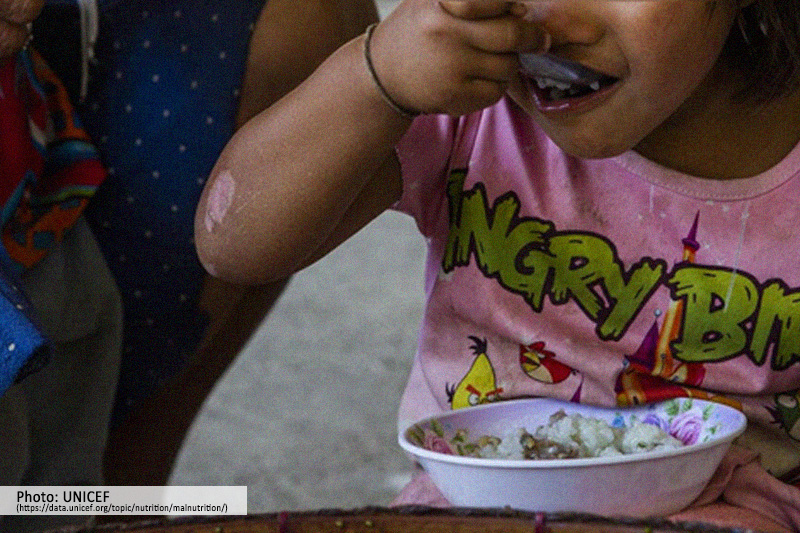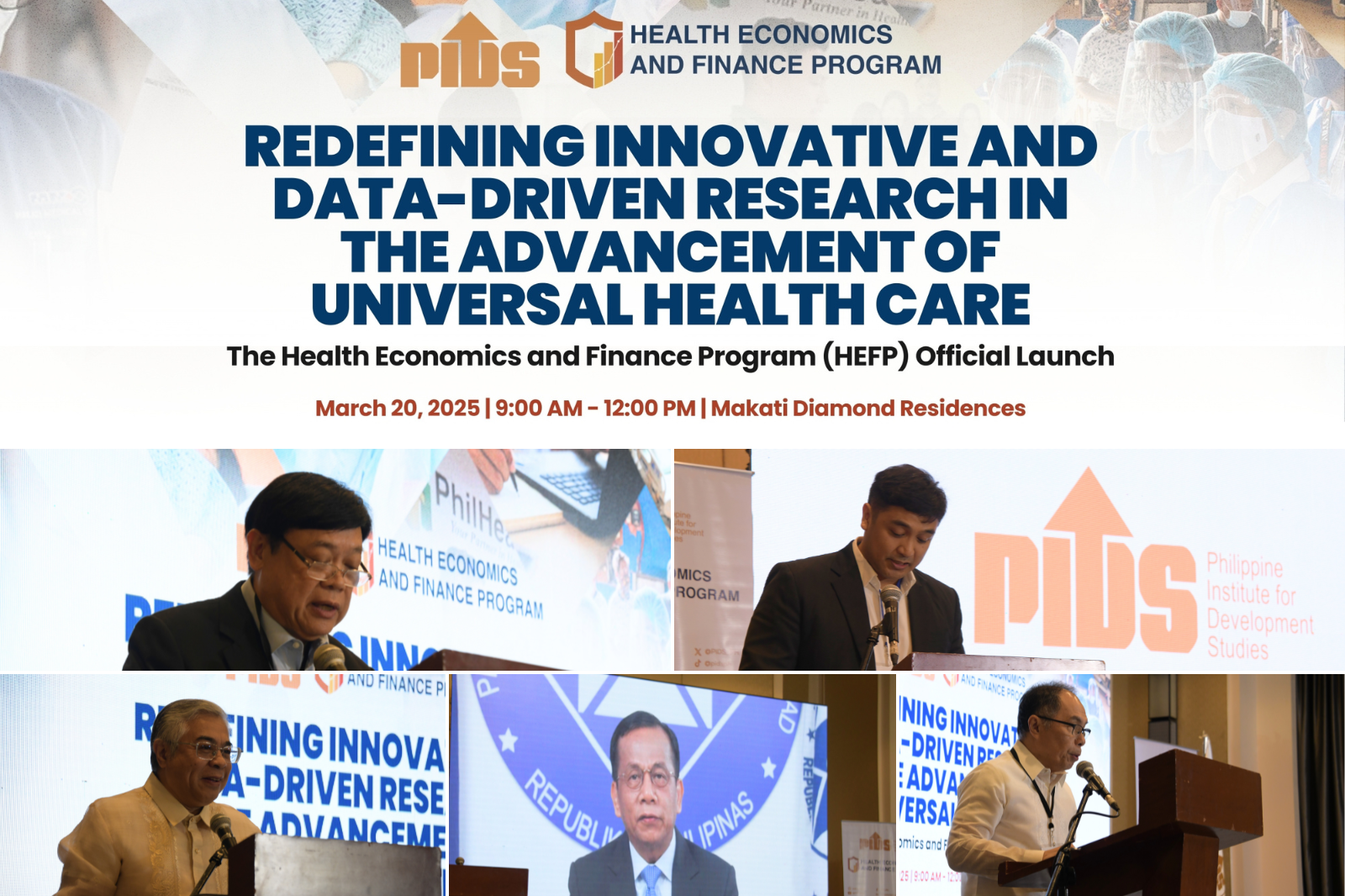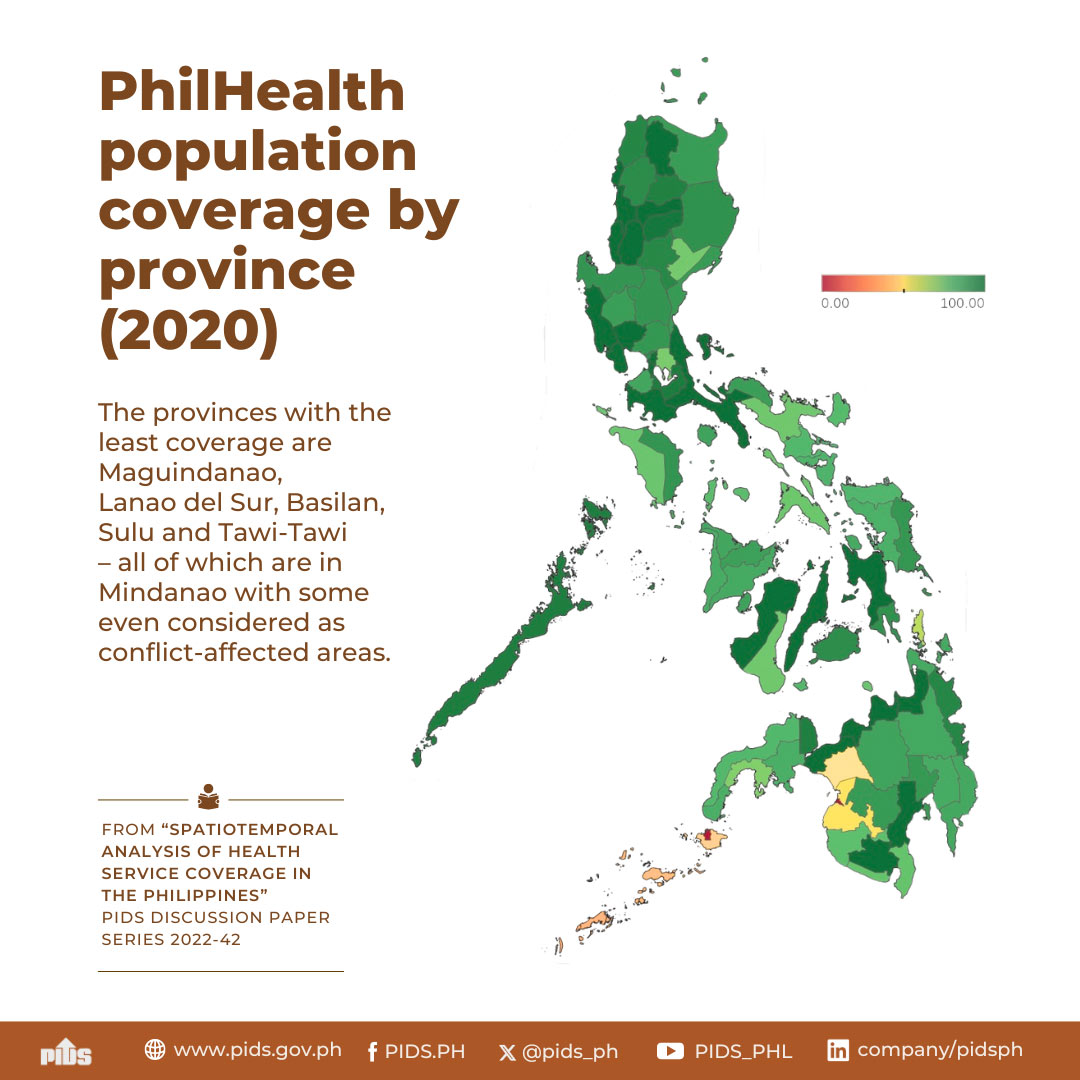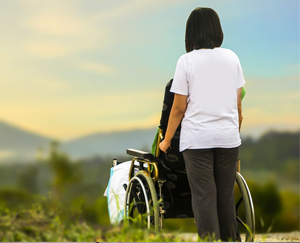
Women and children who belong to the persons with disabilities (PWDs) sector have lesser access to PhilHealth, according to a study of state think tank Philippine Institute for Development Studies (PIDS).
In a forum organized by PIDS, Senior Research Fellow Celia Reyes disclosed that “less than 20 percent of households with PWD women and 25 percent of families with PWD children” have access to PhilHealth.
She said that while the government is trying to provide universal coverage especially for the poor and the marginalized group like children and PWDs, “only 63% of families have at least one member enrolled at PhilHealth.”
Reyes added that PhilHealth’s Z-More package, which was introduced in 2013 and expanded in 2016 to include those with mobility impairment, is still not enough to meet the needs of PWDs.
In her presentation, Reyes specified the need to include newborn-screening (NBS) in the expanded PhilHealth package to “facilitate early detection and intervention”, emphasizing that “undetected and untreated disorders at an early age can lead to serious illnesses or even death.”
“The expanded NBS test can detect 28 disorders from birth to six months. It is available in all hospitals, lying-in clinics, rural health units (RHUs), and private clinics. But the issue is affordability. With the expanded cost that amounts to PHP 1,500.00, PhilHealth will only cover up to PHP 550. This means that the excess of PHP 950 will be shouldered by the PhilHealth member which is quite costly for many poor mothers,” Reyes explained.
She emphasized that the Department of Health (DOH) can assist RHUs in procuring necessary equipment and testing materials for hearing and mental facilities. “One reason why babies and children don’t get tested for hearing impairments is because the machine is expensive. It costs about PHP 300,000.00. The Health Facilities Enhancement Program of the DOH could probably cover this,” she stated.
The PIDS social sector expert also emphasized the importance of increasing the accessibility of PWDs to health workers and facilities. “Right now, the DOH is deploying doctors, nurses, and midwives to local health facilities, but perhaps we can also encourage the agency to deploy physical therapists and EENTs, among others, to local health units,” she remarked.
Reyes likewise noted the necessity to establish and strengthen the partnership between local health units and medical schools. Citing the results of their studies in Central Visayas, “interns can actually complement the regular health personnel of LGUs. One of the best practices we’ve seen in San Remigio and Mandaue in Cebu is that they partnered with medical schools nearby and these medical schools were actually able to provide interns who can man the health centers.”
She also urged the government to extend PhilHealth coverage to all poor PWDs and expand its benefits. “Right now, there are still some poor PWDs who are unaware that they actually have access to PhilHealth. LGUs need to be proactive in enrolling them,” Dr. Reyes claimed.
Toward the end of her presentation, Reyes raised the importance of training families on long-term care for PWDs and in sensitizing communities.
“San Remigio became famous after Yolanda because it was one of the most affected communities. International nongovernment organizations who came to assist the LGU saw that there were many mentally-ill persons who were caged or chained. This is because the families and the community did not really know how to deal with them. It is necessary to capacitate families in terms of long-term care for PWDs as well as train communities on how to be more sensitive to the needs of PWDs”, said Reyes. #
In a forum organized by PIDS, Senior Research Fellow Celia Reyes disclosed that “less than 20 percent of households with PWD women and 25 percent of families with PWD children” have access to PhilHealth.
She said that while the government is trying to provide universal coverage especially for the poor and the marginalized group like children and PWDs, “only 63% of families have at least one member enrolled at PhilHealth.”
Reyes added that PhilHealth’s Z-More package, which was introduced in 2013 and expanded in 2016 to include those with mobility impairment, is still not enough to meet the needs of PWDs.
In her presentation, Reyes specified the need to include newborn-screening (NBS) in the expanded PhilHealth package to “facilitate early detection and intervention”, emphasizing that “undetected and untreated disorders at an early age can lead to serious illnesses or even death.”
“The expanded NBS test can detect 28 disorders from birth to six months. It is available in all hospitals, lying-in clinics, rural health units (RHUs), and private clinics. But the issue is affordability. With the expanded cost that amounts to PHP 1,500.00, PhilHealth will only cover up to PHP 550. This means that the excess of PHP 950 will be shouldered by the PhilHealth member which is quite costly for many poor mothers,” Reyes explained.
She emphasized that the Department of Health (DOH) can assist RHUs in procuring necessary equipment and testing materials for hearing and mental facilities. “One reason why babies and children don’t get tested for hearing impairments is because the machine is expensive. It costs about PHP 300,000.00. The Health Facilities Enhancement Program of the DOH could probably cover this,” she stated.
The PIDS social sector expert also emphasized the importance of increasing the accessibility of PWDs to health workers and facilities. “Right now, the DOH is deploying doctors, nurses, and midwives to local health facilities, but perhaps we can also encourage the agency to deploy physical therapists and EENTs, among others, to local health units,” she remarked.
Reyes likewise noted the necessity to establish and strengthen the partnership between local health units and medical schools. Citing the results of their studies in Central Visayas, “interns can actually complement the regular health personnel of LGUs. One of the best practices we’ve seen in San Remigio and Mandaue in Cebu is that they partnered with medical schools nearby and these medical schools were actually able to provide interns who can man the health centers.”
She also urged the government to extend PhilHealth coverage to all poor PWDs and expand its benefits. “Right now, there are still some poor PWDs who are unaware that they actually have access to PhilHealth. LGUs need to be proactive in enrolling them,” Dr. Reyes claimed.
Toward the end of her presentation, Reyes raised the importance of training families on long-term care for PWDs and in sensitizing communities.
“San Remigio became famous after Yolanda because it was one of the most affected communities. International nongovernment organizations who came to assist the LGU saw that there were many mentally-ill persons who were caged or chained. This is because the families and the community did not really know how to deal with them. It is necessary to capacitate families in terms of long-term care for PWDs as well as train communities on how to be more sensitive to the needs of PWDs”, said Reyes. #

